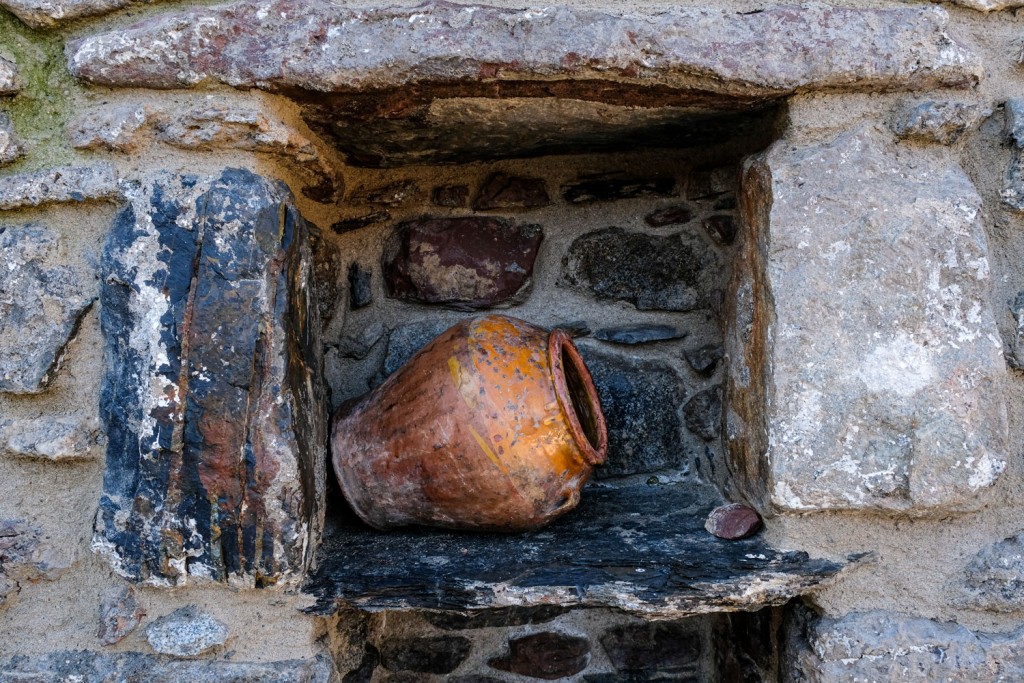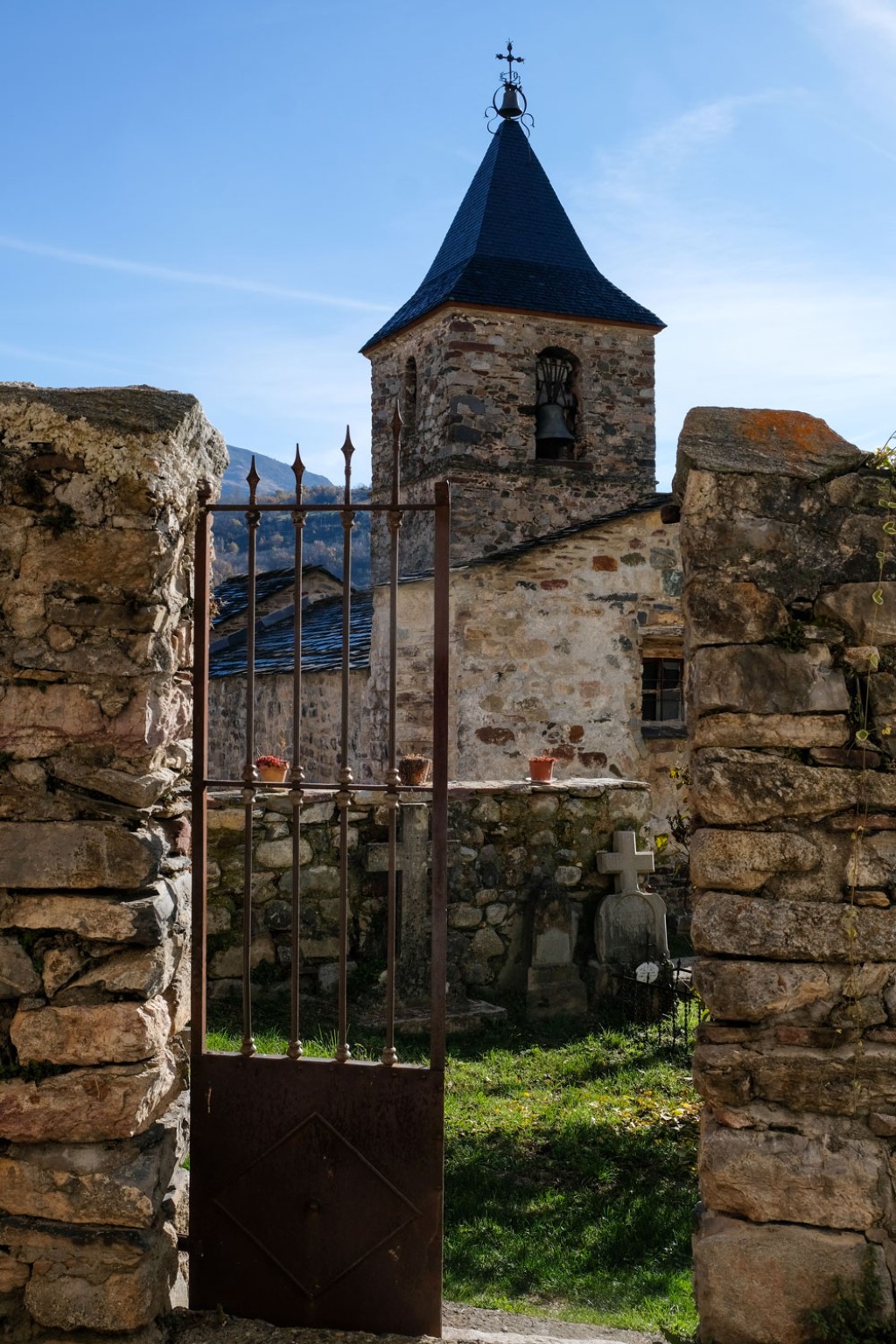El ordenamiento urbano de Villanova, que se va encaramando sobre una ladera poblada de vegetación, ya parece indicar la vocación dúplice de sus gentes.
Two are the main historic neighbourhoods, two were the Romanic parishes that flanked the original urban structure of such a tiny town, and two are the current population cores: the upper one with the most veteran and land linked population, and the bottom one, more modern and where the youth population and the professionals are providing it with a new lifestyle. Equally two, the bishopric and Casa de los Bardaxí, were the historical lords of this land from whom the charming and welcoming locals could be freed.
Nevertheless, Villanova is more than a duplicity sum; it is a town of fountains, well-kept houses and, in the old district, hideouts that ooze romanticism.
History and architecture
There is historic evidence of Villanova dating back to 1006 and 1010 where Guinda sells a vineyard to Enardo in a place called Billanue del Valle de Sos. Also in 1017, the lord Enardo buys another vineyard to Bonofilo de Sos in Billanue. This evidence shows how large is the history of this place that is reflected in the current architecture.
The houses are the best proof of the close balance between the traditional culture and the natural environment in which they were sustained. The materials used to build them are those found in the surroundings and the room’s distribution is perfectly adapted to the agricultural and livestock labours. Two lovely examples of this local architecture are Casa Betrán, a monumental patio house, and Casa Riu, a house full of well-kept decorative details in its façade.

Regarding religious architecture, Villanova/Bilanoba never ceases to amaze. It is one of the few places where two Romanic Lombard churches were built in the same core, choosing the two most renowned locations of the urban ensemble. This could be tied to the medieval presence of two simultaneous estates in the town that apparently were competing for the prestige by building each one a church.
The oldest church is Santa María church that dates back to the first half of the 12th century. The Romanic style and the lovely silhouette make it special. By crossing the attached traditional cemetery, we find the liturgically oriented apse.
The main floor is rectangular and was transformed into a drop Latin cross during the 16th century by adding lateral chapels. The semicircular apse is crowned outdoors by a row of blind arches and pilasters reaching down to the ground.
When paying attention to the arches, there are remains of Romanic paints on them. The tower is attached to the south oriented wall and it is a square prism formed by three modules topped with a floor tile pyramidal spire.

The small San Pedro’s church is the second church of Villanova. Even though it seems simple, it captivates visitors due to its naïve aspect and the apse with multiple Lombard arches and the Romanic small channels. This church seems to date back between the 12th and the 13th centuries and is devoted to San Pedro Apostle, the local patron saint.
The original floor was rectangular but it was modified by adding side chapels resulting in a drop Latin cross. It has an east oriented semicircular apse rounded off by blind arches all around its perimeter.
The most remarkable of this church is the San Pedro’s altarpiece. It was built between 1520 and 1530 and it contains 13 panels, a central recess and an attic with the Calvary cross. In addition, it is worth highlighting the baptismal font that is arc-shaped and hold by an open hand.
Interesting sites around Villanova
Both Villanova and its surroundings are worth visiting and enjoying. Without any doubt, these are sites that nature has given us in order to admire its majesty and to contribute to make it grow.
Posets-Maladeta Natural Park
Located in the most oriental zone of the Aragón’s Pyrenees, in the top of Benasque Valley and 10 minutes away of Villanova, you will find the best representation of the high mountain pureness and harshness.
In this park, the highest summits of Aragón and all the Pyrenees mountain chain can be found, Aneto with 3,404 m and Posets or Llardana with 3,369 m.
More than a hundred of glacier origin lakes (‘ibones’ in Aragón) can be contemplated, in addition to impressive waterfalls, glaciers and endless possibilities to practice hiking, mountaineering, ski touring or cross-country ski, among others.
Aramón Cerler ski resort
Located at less than half an hour from Villanova, Aramón Cerler is the ski resort with the longest slopes in all the Pyrenees. Placed in Benasque Valley and surrounded by more than 60 summits of three thousand metres, this ski resort is a magical site that impresses everyone due to its spectacular natural surroundings.
The more than 80 skiable kilometres and the 72 ski slopes aimed at different levels are distributed in three valleys: Cerler, Ampriu and Castanesa. In addition, visitors can enjoy several marked circuits for ski touring and snowshoes.
Roda de Isábena
Located at less than one hour from Villanova, in Roda de Isábena we find a lovely medieval ensemble which is home to one of the most delightful Spanish cathedrals.
This Middle Ages gem consists of intricate alleys that shape the urban area crowned by the former San Vicente cathedral, the most ancient of Aragón and the smallest in Spain, but also the most beautiful.
These are just some of the places to visit once you arrive to Benasque Valley. Try to enjoy some peaceful days here and experience this historical land and its flavours.
Come and taste our local dishes that have been cooked with the land treasures and with the best cheese and meat of all the northern Spain.
The history and the idiosyncrasy of every land are also known thanks to the gastronomy and, in this way, we have much to show you by means of senses.
{{ planning.translation.title }}
-
· {{ partners_tipology.translation.title }} ({{partners_tipology.contents.length}})